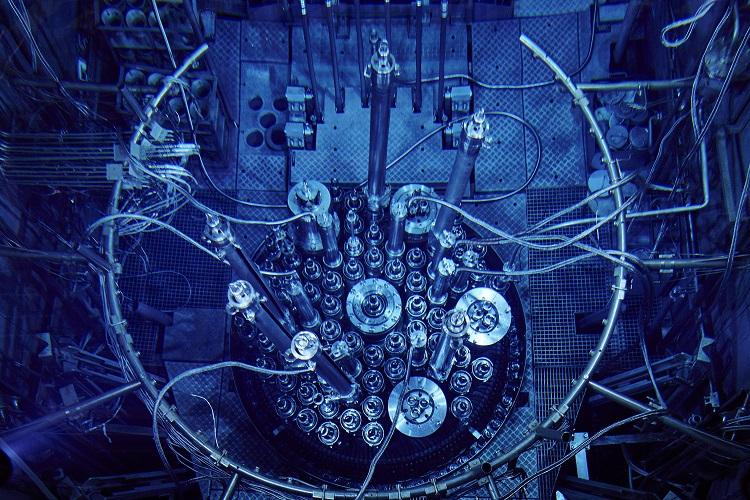Fanny’s factcheck: Does wind power rely on the nuclear sector too?
© In association with De Standaard Uitgeverij. All prints and storylines belong to them.

From the comic book: 'De Kiekeboes: Uranium-235'
From the nuclear power plant in Doel to the fictional comic book company 'Nuclean': in the latest comic book 'Uranium-235', Fanny Kiekeboe always finds herself around nuclear energy. Even when chasing a villain among windmills at sea, she remains closely linked to nuclear energy. After all, did you know that nuclear energy has a foothold in wind power?
Indeed, wind turbines require semiconductors to transport generated power. In our Belgian Reactor 2 (BR2) at SCK CEN in Mol, we irradiate silicon into high-quality semiconductors, also known as doped silicon.
Doped what?
Let's start at the beginning. Silicon is one of the most abundant elements on earth and is crucial for many modern technological applications as a semiconductor. A semiconductor is suitable for regulating the transport of current. By adding small impurities, we can change the electrical properties and thus control conductivity. We call this doping.

How does it work?
It is essential that pure semiconductors are carefully doped and that impurities are evenly distributed. Otherwise, this could lead to energy losses, reduced efficiency and possibly even unpredictable reliability of the devices (such as wind turbines).
And this is precisely why the nuclear energy sector makes its appearance in this story. By irradiating silicon in our BR2 research reactor, we can guarantee homogeneous distribution. But how does that work in specific terms?
Silicon is irradiated in our research reactor BR2. This silicon absorbs 1 neutron, this neutron then mutates into a proton and the emission of a positron.
This reaction changes the material's electrical properties and turns it into a semiconductor, doped silicon. These semiconductors form the base material for components of high-power electronics such as those found in solar and wind power systems, hybrid cars and high-speed trains.
Doped silicon in our daily lives:
You would hardly expect it but doped silicon, and thus the nuclear world, has become an integral part of our daily lives.
Five applications in which doped silicon continues to be used:
- Computers and smartphones:
The microchips used in computers, smartphones and other electronic devices are made of doped silicon.
- Solar panels
Silicon is an important material in the production of photovoltaic solar panels. By doping silicon with certain elements, solar cells can more efficiently convert sunlight into electricity.
- LED lighting
LEDs use doped silicon to produce light.
- Automotive electronics
Many modern cars use doped silicon in their electronic systems, such as engine controls, sensors and entertainment units.
- Medical devices
Doped silicon is also used in various medical devices, such as pacemakers and MRI machines.

So are we driving around with radioactive elements in our cars?
No, of course not! Not everything irradiated is necessarily radioactive. It is comparable to food sterilisation. Food we irradiate does not become radioactive either! We only irradiate silicon to change its chemical properties. Moreover, all materials are carefully measured and checked after irradiation. This ensures that the final product has no harmful effects on humans or the environment.
Fact check:
-
Doped silicon is generally safe for use in electronic devices and other applications in which it is used. The materials used for doping are carefully chosen and controlled to ensure they have no harmful effects on human or environmental health.
-
However, the production of doped silicon and semiconductors can have an environmental impact, particularly in terms of energy consumption and waste generation. However, manufacturers are increasingly implementing environmentally friendly production methods and recycling materials to reduce this impact. Silicon irradiation uses the remaining (surplus) neutrons and therefore increases the efficiency of our nuclear reactor.